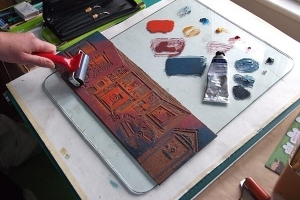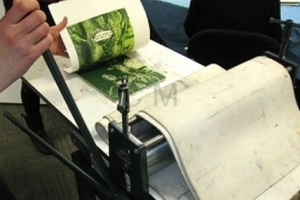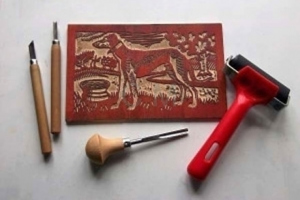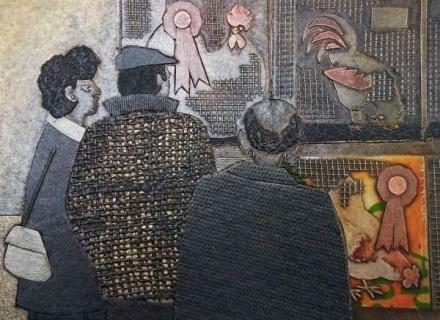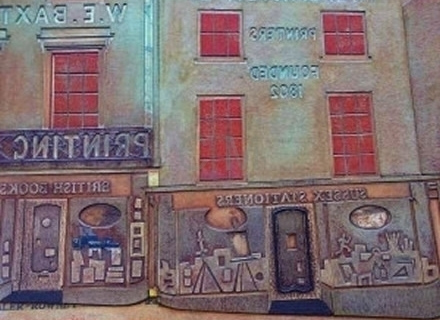Here is an explanation of some printmaking terms and main methods that I use when creating my prints. Please click on the images to see a larger version.
An original print is a piece of work handmade by the artist. By individually inking up and printing from specially prepared blocks or plates a run of images or ‘prints’ can be produced, each one an original piece of artwork. Being hand produced there may well be slight variations between them. A run of identical prints from a digital printing machine is a different matter entirely and these prints are called reproductions. Original or handmade prints are printed in limited editions, each one signed and numbered by the artist. 5/20, for example, means that the print is number 5 out of an edition of 20. An Artist’s proof or A.P. means that the print is one of a small number for the artist’s own records, often recording experimental colour combinations or trials on different papers.
Linocuts and woodcuts are examples of relief printing. The design is first drawn on to the block (piece of lino or wood) in reverse. The areas that are not to be printed are cut away with knives and gouges leaving the image to be printed in relief. Using a roller or by dabbing with a little twist of rag, ink is applied to the surface of the block. The image is then printed on to a sheet of specially chosen paper, either by passing it through a press or by applying pressure in some other way – a wooden spoon rubbed carefully but firmly over the back of the paper works well.
A collagraph is printed from a block made up of applied textures in much the same way as a collage is created. String, lace, woven fabrics, wool and cut card for example all produce interesting textures when printed. Applied textures can be used in conjunction with a woodcut or linocut by gluing the materials directly on to the block.
A monoprint, as the name suggests, gives only one print from plate to paper. The second and third impressions become progressively fainter as the ink diminishes. I have used monoprints to create coloured backgrounds to some of my prints by painting the ink directly on to a pane of glass using stiff brushes. The image is transferred to a sheet of paper by placing the paper carefully on to the inked glass then rubbing over it with the back of a wooden spoon. The glass plate needs to be re-inked each time and consequently the images are not identical.
I occasionally use stencils to add a block of background colour or for adding small details to a print. The desired shape is cut from paper or thin acetate sheet which then acts as a mask while allowing ink to be dabbed or rolled through the cut away area. It is sometimes simpler and quicker to cut a stencil rather than a whole new block. A stencil can also be used to mask out an area on a print by placing it directly on to an inked block before printing it off.
Two or three of my images are not prints at all but collages made from paper cut or torn to form a picture.
There are many interesting techniques and ideas to be explored within printmaking including many I haven’t yet tried. No wonder I never tire of it!

